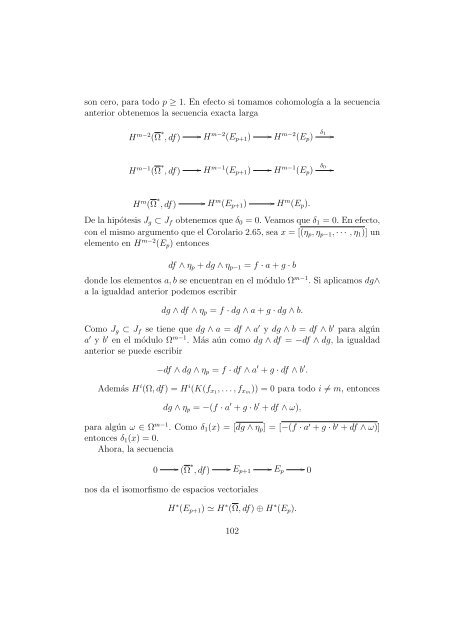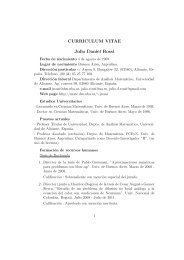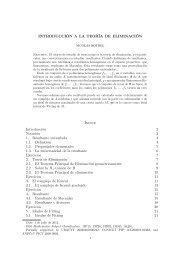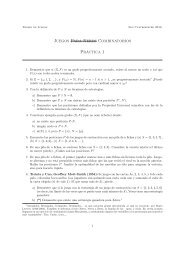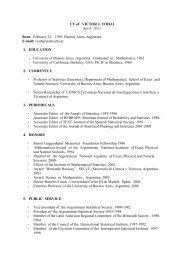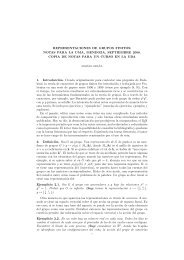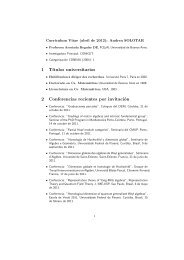You also want an ePaper? Increase the reach of your titles
YUMPU automatically turns print PDFs into web optimized ePapers that Google loves.
son cero, para todo p ≥ 1. En efecto si tomamos cohomología a la secuencia<br />
anterior obtenemos la secuencia exacta larga<br />
H m−2 (Ω ∗ , df)<br />
H m−1 (Ω ∗ , df)<br />
H m (Ω ∗ , df)<br />
<br />
m−2 H (Ep+1)<br />
<br />
m−1 H (Ep+1)<br />
<br />
Hm (Ep+1)<br />
<br />
m−2 H (Ep)<br />
<br />
m−1 H (Ep)<br />
<br />
Hm (Ep).<br />
δ1 <br />
δ0 <br />
De la hipótesis Jg ⊂ Jf obtenemos que δ0 = 0. Veamos que δ1 = 0. En efecto,<br />
con el mismo argumento que el Corolario 2.65, sea x = [(ηp, ηp−1, · · · , η1)] un<br />
elemento en H m−2 (Ep) entonces<br />
df ∧ ηp + dg ∧ ηp−1 = f · a + g · b<br />
donde los elementos a, b se encuentran en el módulo Ω m−1 . Si aplicamos dg∧<br />
a la igualdad anterior podemos escribir<br />
dg ∧ df ∧ ηp = f · dg ∧ a + g · dg ∧ b.<br />
Como Jg ⊂ Jf se tiene que dg ∧ a = df ∧ a ′ y dg ∧ b = df ∧ b ′ para algún<br />
a ′ y b ′ en el módulo Ω m−1 . Más aún como dg ∧ df = −df ∧ dg, la igualdad<br />
anterior se puede escribir<br />
−df ∧ dg ∧ ηp = f · df ∧ a ′ + g · df ∧ b ′ .<br />
Además H i (Ω, df) = H i (K(fx1, . . . , fxm)) = 0 para todo i = m, entonces<br />
dg ∧ ηp = −(f · a ′ + g · b ′ + df ∧ ω),<br />
para algún ω ∈ Ω m−1 . Como δ1(x) = [dg ∧ ηp] = [−(f · a ′ + g · b ′ + df ∧ ω)]<br />
entonces δ1(x) = 0.<br />
Ahora, la secuencia<br />
0<br />
<br />
∗<br />
(Ω , df)<br />
<br />
Ep+1<br />
nos da el isomorfismo de espacios vectoriales<br />
<br />
Ep<br />
H ∗ (Ep+1) H ∗ (Ω, df) ⊕ H ∗ (Ep).<br />
102<br />
<br />
0


